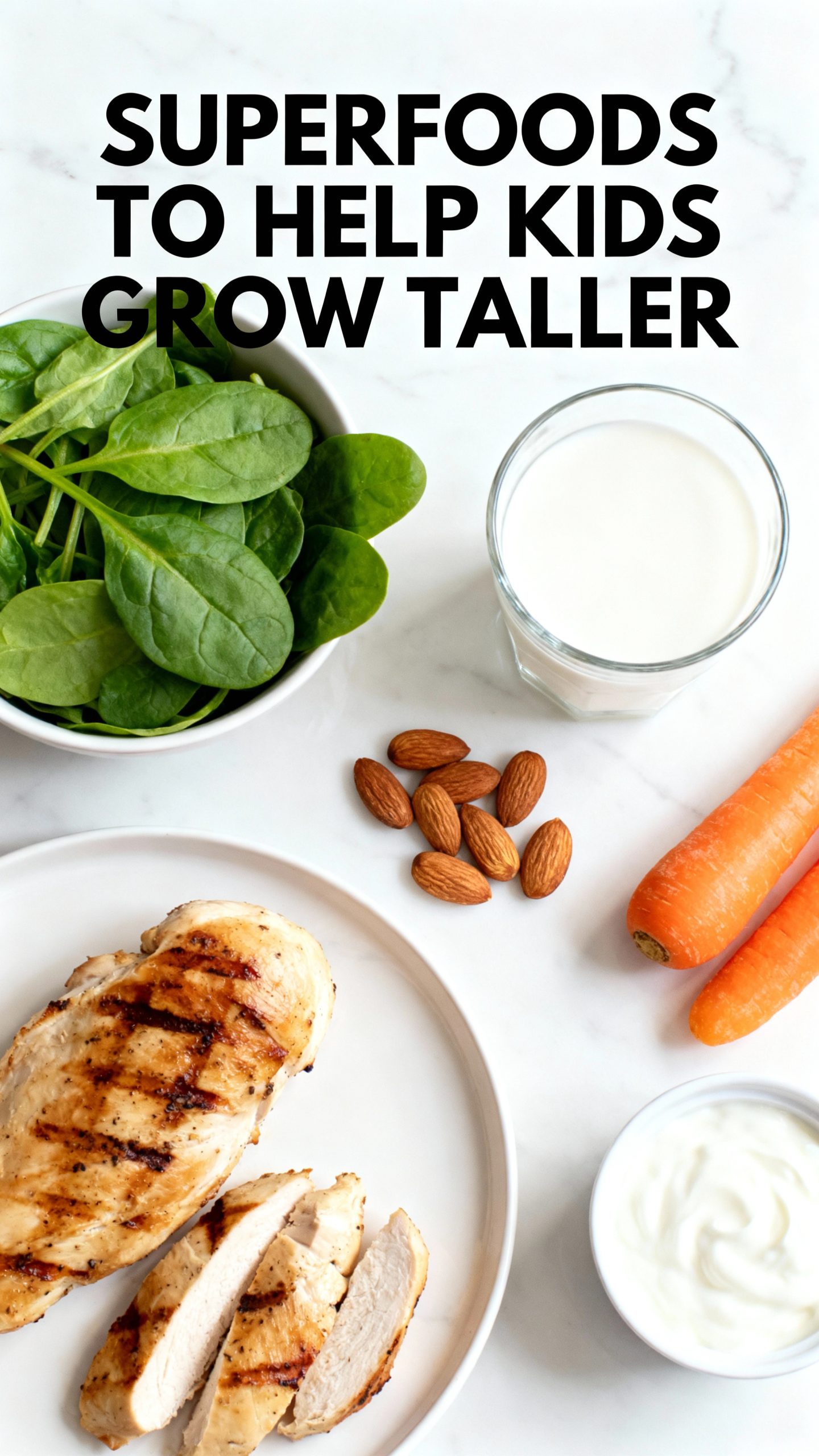Genetics determine a significant portion of a child’s height—estimates suggest around 80%. However, the remaining percentage depends heavily on environmental factors, with nutrition being the most critical driver. Without the proper fuel, the body simply cannot construct the strong skeletal framework required for vertical growth.
Many parents ask: “Is there a specific diet to increase height?”
While no single food acts as a “miracle switch,” a diet lacking in essential macronutrients and micronutrients can lead to stunted growth. To support natural development and ensure children reach their maximum potential height, their daily intake must focus on foods that stimulate the production of Human Growth Hormone (HGH) and support bone mineralization.
Below is a comprehensive guide to the specific foods that effectively support this biological process.
💡 Expert Nutrition Insight
Calcium needs a partner. Many parents focus solely on calcium for bones, but without sufficient Vitamin D, the body cannot absorb that calcium effectively. Ensure your child gets moderate sun exposure or consumes Vitamin D-fortified foods alongside these meals to maximize bone density.
1. Poultry and Lean Proteins: The Framework of Growth
Protein is the cornerstone of development. It serves as the building block for tissues, muscles, cartilage, and bones.
Chicken
Chicken is one of the highest protein sources available among animal foods. It provides immense benefits for growing children:
- High Protein Content: Essential for tissue repair and muscle building.
- Vitamin B12: A water-soluble vitamin crucial for maintaining height and preventing biological stagnation.
- Taurine: An amino acid that regulates bone formation and production. Including grilled or boiled chicken in salads or sandwiches ensures a high intake of these vital nutrients without excessive unhealthy fats.
2. Leafy Green Vegetables: The Mineral Powerhouse
It can be challenging to get children to eat greens, but their impact on height is undeniable. Vegetables like spinach, kale, and arugula are superstars in the world of nutrition.
Spinach
Spinach is remarkably dense in nutrients. It packs a double punch of:
- Calcium: For bone hardness.
- Iron: Essential for red blood cells. Iron deficiency (anemia) can cause fatigue and weakness, which hinders physical activity and, consequently, growth.
- Vitamin K: This vitamin increases bone density and helps prevent the breakdown of bone tissue.
3. Dairy Products: Essential for Skeletal Density
Unless a child is lactose intolerant, dairy remains the most accessible source of calcium and protein.
Milk
Milk acts as a comprehensive growth booster. It helps in the synthesis of proteins in the body. Research suggests that cow’s milk stimulates the production of IGF-1 (Insulin-like Growth Factor 1), a hormone that plays a major role in growth during childhood.
Yogurt
Yogurt is not only rich in protein and calcium but also serves as a fantastic source of probiotics. A healthy gut ensures that nutrients from all other foods are absorbed properly. If the digestive system is compromised, even the healthiest diet becomes less effective.
4. Nuts and Seeds: The Nutrient-Dense Snack
For a plant-based boost, nuts and seeds are unrivaled. They are easy to add to breakfast cereals or eaten as a snack.
Almonds
Almonds are particularly beneficial for height. They are loaded with fiber, manganese, and magnesium.
- Magnesium’s Role: Magnesium is necessary for the proper structural development of bones. A deficiency in this mineral can lead to fragile bones and poor growth metrics.
- Vitamin E: Almonds are also rich in Vitamin E, an antioxidant that protects cells and tissues during rapid growth phases.
5. Root Vegetables: Vitamin A Synthesis
Root vegetables are often favorites among kids due to their naturally sweet flavor, and they are excellent for growth.
Carrots
While famous for eye health, carrots are crucial for height because they are rich in beta-carotene. The body converts beta-carotene into Vitamin A.
- Mechanism: Vitamin A is required for the synthesis of proteins. Furthermore, it helps preserve calcium in the bones, ensuring they remain strong enough to support a taller frame. Raw carrots or lightly steamed ones retain the most nutrients.
6. Fish: The Omega-3 Advantage
Fish, particularly fatty types like salmon (and sardines, as depicted in nutritional charts), are incredibly healthy.
- Omega-3 Fatty Acids: These healthy fats are crucial for brain development and overall cellular health. They also play a role in bone turnover to maximize growth.
- Vitamin D Source: Salmon is one of the few natural dietary sources of Vitamin D, which, as mentioned, is critical for calcium absorption.

Lifestyle Factors: Sleep and Posture
Nutrition provides the bricks, but sleep does the building. It is important to remember that the Human Growth Hormone (HGH) is primarily released by the pituitary gland during deep sleep cycles.
- Recommendation: Children aged 6-13 need between 9 to 11 hours of uninterrupted sleep.
- Physical Activity: Stretching exercises, swimming, and hanging from bars can help straighten the spine and decompress cartilage, allowing children to stand at their full natural height.
Conclusion
Consistency is key. A balanced diet incorporating chicken, dairy, leafy greens like spinach, and nuts like almonds provides the optimal biological environment for growth. By focusing on these nutrient-dense foods, you are supporting your child’s health, energy, and physical development in the most natural way possible.


